GARDENS BY THE BAY
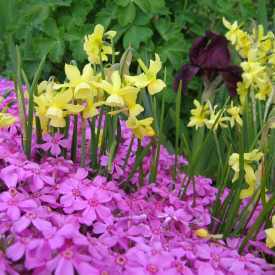
G
A
R
D
E
N
C
O
L
O
R
Color is everything to a gardener. We make choices when buying plants based on our own color preferences. When choosing plants to put together in our gardens we consider not only the colors of flower petals, but also of leaves, stems, central cones and seed pods. Our 'Gardens By The Bay' site has numerous pages providing professional gardeners' ideas for perfect plant pairings, many based on color. They can be found under Plant Partnerships at the bottom of this and all our other pages. If you prefer to find your own companion plants however you will need to know a bit about color theory.
Color Wheel Pro: See Color Theory In Action can provide interesting and sometimes unexpected details about basic colors, their definitions, uses and connotations. Follow their links for the Pros and Cons of using a particular color scheme and to obtain helpful tips about those you choose to use. Their site is interesting and informative with many explanatory links for you to explore. This will take you away from our site so be sure to bookmark us before you leave so you can find your way back here again.
While you read about various color theories, remember: THE GARDEN YOU CREATE IS YOUR OWN.
Trust your instincts when making choices, even when they may not quite "fit" with any of the traditional definitions of good color design.
C
O
L
O
R
T
E
R
M
S
Gardeners commonly use a number of words which relate to color. Definitions of each of these words can be found below. Photographers as well require color knowledge, but their definitions of particular terms may not be identical to those used by gardeners. Follow the link under Temperature below for information related to color in photography.
HUE
another word for color
TINT
any color plus white
TONE
any color plus gray
SHADE
any color plus black
VALUE
the amount of white, gray or black added to a color to create a new color
TEMPERATURE
the overall impression or emotional impact created by a color
"the photographic color temperature is measured only on the relative intensity of blue to red" - Allan Engelhardt
DEGREES OF TEMPERATURE
Warm
reds, oranges, yellows
exciting, stimulating - advance forward
Cool
greens, blues, violets
refreshing, calming - recede backward
| WARM COLORS | |
COOL COLORS |
| pure yellow | | violet |
| orange-yellow | | blue-violet |
| yellow-orange | | violet-blue |
| orange | | blue |
| red-orange | | green-blue |
| orange-red | | blue-green |
| red | | green |
| violet-red | | yellow-green |
| red-violet | | green-yellow |
C
O
L
O
R
C
L
A
R
I
F
I
C
A
T
I
O
N
TINT - ADD WHITE
Adding white to pure red will produce pink; "the pink you get depends on the red you start with" - Patrick Lima




TONE - ADD GRAY
Adding gray to pure red produces quite different tones from the original; the gray hue you add will determine the final outcome - lighter grays producing lighter tones, darker grays producing darker tones. All of the images below were produced by adding gray to pure red at the same 75% opacity level, but the lighter gray hue produced quite a different result from the darker gray hue.



SHADE - ADD BLACK
Adding black to a color changes its shade substantially as you can see in the images below. This time we started with a swatch of pure blue and added varying strengths of black.



P
R
I
M
A
R
Y
C
O
L
O
R
S

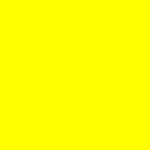

The 3 Primary Colors are red, yellow and blue. Different combinations of these colors, along with white, black and grey, produce all other colors.
RED
Red is one of three primary colors. A color swatch of pure red can be seen above. The images below show a range within the group of colors we refer to as red.


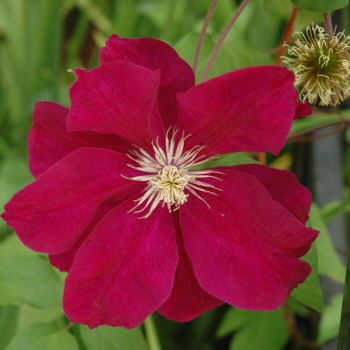

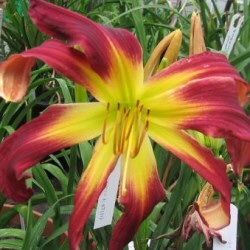
Color schemes using pure red are:
- complementary = green
- split complementary = blue-green & yellow-green
- triad = pure blue & pure yellow
For partnership ideas for red perennials, visit:
YELLOW
Yellow is another of the three primary colors. A color swatch of pure yellow can be seen above. All of the flowers below can be described as yellow but each is quite different and distinct.


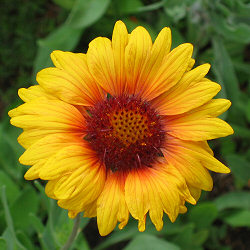

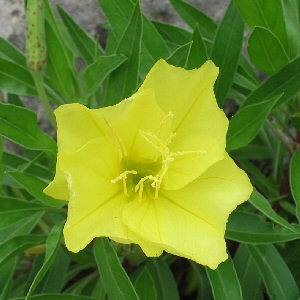
Color schemes using pure yellow are:
- complementary = violet
- split complementary = red-violet & blue-violet
- triad = pure blue & pure red
For partnership ideas for yellow perennials, visit:
BLUE
Blue is the last of the three primary colors. A color swatch of pure blue can be seen above. Like the other primaries, blue can also appear in many guises as can be seen in the images below.

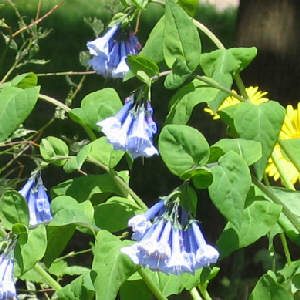
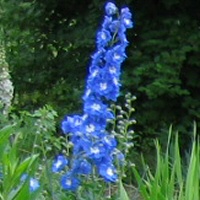
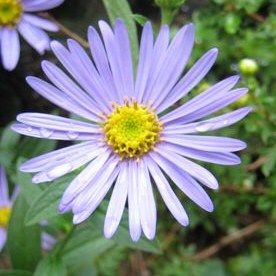

Color schemes using pure blue are:
- complementary = orange
- split complementary = yellow-orange & red-orange
- triad = pure yellow & pure red
For partnership ideas for blue perennials, visit:
S
E
C
O
N
D
A
R
Y
C
O
L
O
R
S
Secondary colors are those made from a combination of two of the three Primary Colors.

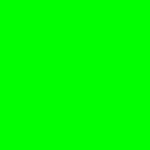

A word of explanation is needed here. The color swatch for green above is pure green. There is no specific code for either pure orange or pure violet so I have created swatches of my own.
ORANGE
Orange is produced by combining Red with Yellow.
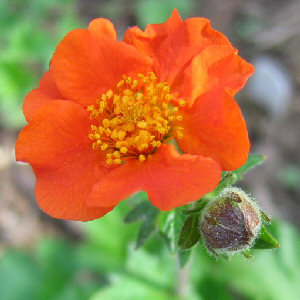
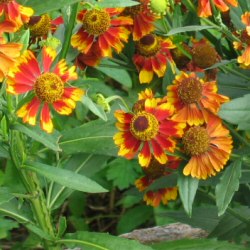
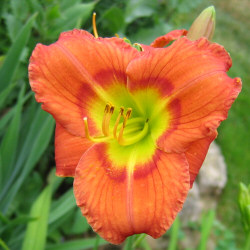
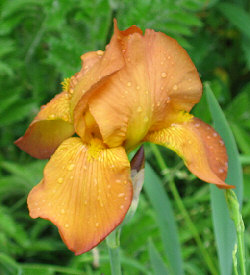
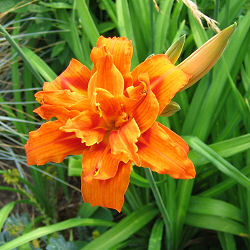
Color schemes using orange are:
- complementary = pure blue
- split complementary = violet-blue & green-blue
- triad = violet & pure green
For partnership ideas for orange perennials, visit:
GREEN
Green is produced by combining Blue with Yellow.

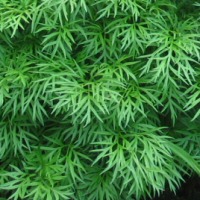
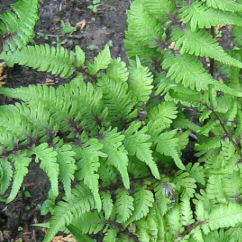

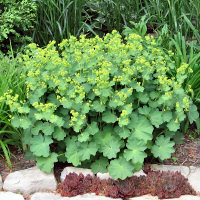
Color schemes using pure green are:
- complementary = pure red
- split complementary = orange-red & violet-red
- triad = pure orange & violet
For partnership ideas for green foliage perennials, visit:
VIOLET
Violet is produced by combining Red with Blue. What we commonly call purple is referred to as violet on a color wheel.
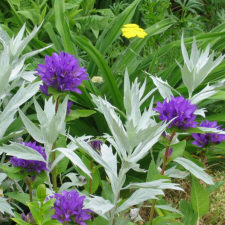
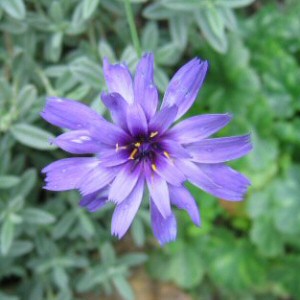


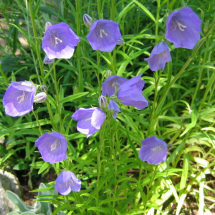
Color schemes using violet (purple) are:
- complementary = pure yellow
- split complementary = green-yellow & orange-yellow
- triad = pure green & pure orange
For partnership ideas for purple perennials, visit:
T
E
R
T
I
A
R
Y
C
O
L
O
R
S
A Tertiary Color is created by mixing one primary color with one secondary color. Examples include:
- red & magenta = rose
- yellow & green = chartreuse
- blue & cyan = azure
- blue & magenta = violet
T
H
E
G
A
R
D
E
N
E
R
'
S
C
O
L
O
R
W
H
E
E
L
Color Theory Simplified
As you can see, the use of color theory to produce attractive plant combinations can become quite complicated. Keep reading below however and you will be introduced to a simple solution to this dilemma.
Well-known gardening writer and lecturer Sydney Eddison has created this invaluable new take on the
Color Wheel for all of us, whether we're designing a garden, a bouquet of flowers or a room in our home. Just over 9" in diameter, it is perfect to take to the garden to help identify the color of any flower petal, leaf or stem. The text on both sides of this wheel defines:
- Color Theory for Gardeners
- Warm and Cool Colors
- Hue, Tint, Tone and Shade
- Complementary Colors
- Split Complementary Colors
- Triad Colors
- Monochromatic Colors
- Analogous Colors
- Analogous-Complementary Colors
Using this waterproof wheel is a cinch. One side of the wheel shows color tints, the other color tones and shades. Simply point the arrow to one of 18 pure colors on the outer rim of the wheel. A template in the centre of the wheel instantly identifies that color's complementary color, its split-complementary colors as well as triad colors. Each of these 18 colors around the wheel is separated into 3 tones, 3 shades and 6 tints. Swatches on both sides of this wheel total an amazing 234 hues.
What could be simpler. You don't need to be on-line to make use of this wonderful gardener's tool. Throw away your old paper color wheels and invest in this new one that will serve you well for years. Its creator states "there are only two ways to use color in the garden, Contrast and Harmony. Use it to identify the colors of your own plants and determine what colors will complement them, echo them or otherwise give your garden the WOW-FACTOR it may need. This wheel makes it a snap.
If you need a program that will enable you to find appropriate color combinations on the computer, there are sites for that as well. One of the first I came across was DESIGN COLOR WHEEL. In addition to the usual combination possibilities, this program also includes Alternate Complementary and Tetrad color schemes, based on four rather than three colors.
C
O
L
O
R
C
O
M
B
I
N
A
T
I
O
N
S
We have shown above images of plants of the three Primary Colors (red, yellow and blue) as well as plants of the three Secondary Colors (orange, green and purple/violet). You have also been introduced to the concept of the Color Wheel. We can now move on to explain some methods of combining colors. Much of the wording below is from the Eddison Color Wheel.
COMPLEMENTARY COLORS
Create Contrast
2 colors directly opposite each other on the color wheel
RED & GREEN




YELLOW & VIOLET




BLUE & ORANGE




SPLIT-COMPLEMENTARY COLORS
Create Contrast
a "key" color plus the colors on either side of its opposite
| KEY COLOR |
|
SPLIT-COMPLEMENTARY COLORS |
| yellow |
|
blue-violet & red-violet |
| green-yellow |
|
violet & violet-red |
| yellow-green |
|
red-violet & red |
| green |
|
violet-red & orange-red |
| blue-green |
|
red & red-orange |
| green-blue |
|
orange-red & orange |
| blue |
|
red-orange & yellow-orange |
| violet-blue |
|
orange & orange-yellow |
| blue-violet |
|
yellow-orange & yellow |
| violet |
|
orange-yellow & green-yellow |
| red-violet |
|
yellow & yellow-green |
| violet-red |
|
green-yellow & green |
| red |
|
yellow-green & blue-green |
| orange-red |
|
green & green-blue |
| red-orange |
|
blue-green & blue |
| orange |
|
green-blue & violet-blue |
| yellow-orange |
|
blue & blue-violet |
| orange-yellow |
|
violet-blue & violet |
Must you use all three split-complementary colors to create an attractive garden picture? Of course not. A key color plus just one of its two split-complementary colors can be a wonderful combination.
Does the above seem complicated to you? All these combinations are visible at a glance on Sydney Eddison's Gardener's Color Wheel. Buy one!
TRIAD COMPLEMENTARY
Create Contrast
3 colors, equally spaced from each other on the wheel
| #1 COLOR |
|
#2 COLOR |
|
#3 COLOR |
| red |
|
yellow |
|
blue |
| orange-red |
|
green-yellow |
|
violet-blue |
| red-orange |
|
yellow-green |
|
blue-violet |
| orange |
|
green |
|
violet |
| yellow-orange |
|
blue-green |
|
red-violet |
| orange-yellow |
| geen-blue |
|
violet-red |
TETRADIC COLORS
Create Harmony
4 colors touched by the four corners of a square or rectangle placed in the center of a color wheel
MONOCHROMATIC COLORS
Create Harmony
a single color combined with its tints, tones and shades
ANALOGOUS COLORS
Create Harmony
3-5 adjacent colors on the color wheel that share a common color
ANALOGOUS-COMPLEMENTARY COLORS
Create both Harmony & Contrast
3 adjacent colors on the color wheel plus the complement of one of them
C
O
L
O
R
S
I
T
E
S
Many of the sites below were created to assist web page designers in choosing coding that will allow them to produce pages, borders, text, etc. of quite specific colors. However, they can also be of assistance to the gardener to assist in finding the appropriate plant partners of a tint, tone or shade that will be perfectly suitable with each plant in your garden.
LIST OF COLORS
Here you will find links to definitions of numerous colors by specific names, with color swatches and hex values for each, charts indicating the variations within a color group for quick comparisons, and much more.
COLOR SPECIFIER
This site will give you access to colors, tints, hues and tones by name. Using the color identifier numbers you can then go on to find colors that will specifically suit them on other sites. Click on a color name to see what a full page with that color as a background would look like.
COLOR TOOLS
This site provides lots of fun trying out their various links that enable you to play with your color choices. Useful to web designers and gardeners alike.
COLOR BLENDER
This site gives you the ability to find a color and automatically know five other colors in the same range that will look good with it.
COLR PICKR
For just plain fun, have a look at this site. Click on the silver needle to activate it. Then click on a bubble in the color bubbles and see all the images that pop up around the center. All are in the color you specified and in the category you can choose from several options. Gardeners will want to try the Flower category for starters. Have fun. For gardeners who are also addicted to Sudoku, Kakuro, Jigoku or Kidoku you'll want to click on the puzzles link on this site to take you to a whole new puzzle world.
DIZZINZ
This site will give you all the Web-Safe colors and their identifiers, plus a link to this lady's own web site.
All of our own Gardens By The Bay pages can be accessed by clicking on the links below.
HOME
GARDEN POETRY |
GARDEN POETRY MUSE
GEORGIAN BAY VIEW
BOTANICAL LATIN - BASICS
COLOR THEORY
THE GARDENS
CORNER GARDEN CONSTRUCTION |
CORNER GARDEN PLANTING |
LONG GARDEN
EAST GARDEN |
HOSTA GARDEN |
NORTH GARDEN |
WINTER GARDENS
PLANT PARTNERSHIPS
BLUE PERENNIALS Aconitum -
Geranium |
Iris - Vinca
BULBS Allium - Hyacinthus |
Narcissus only |
Tulipa only |
Minor Bulbs
BUTTERFLY MAGNETS Anaphalis - Hemerocallis |
Liatris - Veronicastrum
 DAYLILIES Spider & Unusual Form DAYLILIES Spider & Unusual Form EDGERS Arabis - Iris |
Nepeta - Veronica
FOLIAGE PERENNIALS
Alchemilla - Tanacetum
HOSTA Hosta - all
HUMMINGBIRD-FRIENDLY PERENNIALS Alcea - Salvia
ORANGE PERENNIALS Achillea - Tulipa
ORNAMENTAL GRASSES Acorus - Imperata |
Miscanthus - Spodiopogon
PINK PERENNIALS Achillea - Lilium |
Lychnis - Veronica
PURPLE PERENNIALS Aconitum - Liatris |
Polemonium - Veronica
RED PERENNIALS Achillea - Veronica
SHADE PERENNIALS Aegopodium - Erythronium |
Ferns - Polemonium |
Polygonatum - Vinca
SILVER FOLIAGE PERENNIALS
Achillea - Cerastium
|
Cornus - Limonium
|
Lunaria - Veronica
SIMPLY SPECIAL PERENNIALS Acanthus - Saxifraga
WHITE PERENNIALS Achillea - Iris |
Kalimeris - Yucca
YELLOW PERENNIALS Achillea - Hypericum |
Inula - Verbascum
VARIEGATED-FOLIAGE PERENNIALS Acorus - Erythronium |
Hakonechloa - Lysimachia |
Miscanthus - Yucca
PLANT PROFILES
Dianthus 'Tiny Rubies' |
Geranium |
Geum coccineum |
Kerria japonica |
Knautia macedonica
Paeonia tenuifolia |
Papaver somniferum |
Rudbeckia |
Salvia 'East Friesland'
Trollius |
Veronica 'Sunny Border Blue'
PROPAGATION
DIVISION - SPRING ONLY |
DIVISION - FALL ONLY |
DIVISION - SPRING OR FALL |
DO NOT DIVIDE
FERTILIZATION
EDGERS Arabis - Iris |
Nepeta - Veronica
FOLIAGE PERENNIALS
Alchemilla - Tanacetum
HOSTA Hosta - all
HUMMINGBIRD-FRIENDLY PERENNIALS Alcea - Salvia
ORANGE PERENNIALS Achillea - Tulipa
ORNAMENTAL GRASSES Acorus - Imperata |
Miscanthus - Spodiopogon
PINK PERENNIALS Achillea - Lilium |
Lychnis - Veronica
PURPLE PERENNIALS Aconitum - Liatris |
Polemonium - Veronica
RED PERENNIALS Achillea - Veronica
SHADE PERENNIALS Aegopodium - Erythronium |
Ferns - Polemonium |
Polygonatum - Vinca
SILVER FOLIAGE PERENNIALS
Achillea - Cerastium
|
Cornus - Limonium
|
Lunaria - Veronica
SIMPLY SPECIAL PERENNIALS Acanthus - Saxifraga
WHITE PERENNIALS Achillea - Iris |
Kalimeris - Yucca
YELLOW PERENNIALS Achillea - Hypericum |
Inula - Verbascum
VARIEGATED-FOLIAGE PERENNIALS Acorus - Erythronium |
Hakonechloa - Lysimachia |
Miscanthus - Yucca
PLANT PROFILES
Dianthus 'Tiny Rubies' |
Geranium |
Geum coccineum |
Kerria japonica |
Knautia macedonica
Paeonia tenuifolia |
Papaver somniferum |
Rudbeckia |
Salvia 'East Friesland'
Trollius |
Veronica 'Sunny Border Blue'
PROPAGATION
DIVISION - SPRING ONLY |
DIVISION - FALL ONLY |
DIVISION - SPRING OR FALL |
DO NOT DIVIDE
FERTILIZATION
BULBS |
ORNAMENTAL GRASSES |
PERENNIALS |
SHRUBS |
VINES
LINKS
GARDENS |
LOCAL GARDENS |
BOTANICAL TERMINOLOGY
GARDENING BOOKS |
NON-GARDENING
HOME
|
|
|